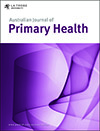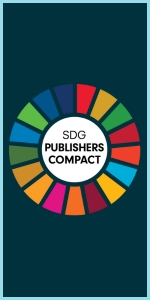Australian Journal of Primary Health
Volume 31
Number 2 2025
We interviewed 18 GPs from regions in Victoria, Australia, with teenage pregnancy rates higher than the state average regarding their experiences of contraceptive counselling. GP participants recognised an unmet need for contraception information and care among teenagers in their region. Facilitating access to all methods of effective contraception for teenagers will require addressing misunderstandings among GPs regarding the suitability of intrauterine devices (IUDs) and increasing the number of IUD-inserting GPs. Normalising contraception discussions as part of routine care for teenagers will further support decision making and uptake.
General practitioners rely on fast, trustworthy guidance to make clinical decisions, and HealthPathways is one tool designed to help. This study explored why some doctors use it regularly while others don’t, uncovering gaps in awareness, mixed motivations, and technical barriers that affect its usefulness. The findings point to the need for better system design and stronger support to help digital tools like HealthPathways become a routine part of patient care.
Health promotion as an upstream approach can relieve pressure on the healthcare system, reduce disease prevalence and health inequities all while being cost-effective. Community Health Centres (CHCs) in Ontario, Canada have been delivering health promotion programming as part of their model of comprehensive primary health care to communities for decades. However, greater investments in health promotion are needed if we want to support and sustain our healthcare systems.
This article belongs to the collection: Models of Community Health in Action.
Primary care can provide preconception care (PCC) to address behavioural, biomedical, and social risks, improving pregnancy outcomes. PCC could be more effective if electronic medical records identified at-risk patients. There is limited evidence on which preconception risk factors are documented in general practice records. Our study’s tool enables researchers to audit these records, improving understanding of documentation quality. It also supports developing a screening process using existing tools to identify women who would benefit most from PCC.
A community health program was introduced in Australia 50 years ago, but Victoria is the only state that still maintains such a program. Through interviews with people involved in the sector over this time, the review of key documents and personal experience, we consider how the aspirations and commitment of the early pioneers have survived (and struggled to survive) political and social pressures over time. Additionally, we discuss ways to ensure a robust community health sector going forward.
This article belongs to the collection: Models of Community Health in Action.
This study explores the perceptions and willingness of Australian healthcare service users to provide sexual orientation and gender identity data. Findings reveal varying levels of willingness based on demographic factors and context, with LGBTQA+ participants showing a preference for inclusive collection methods. The study highlights the importance of sensitive and affirming approaches to sexual orientation and gender identity data collection to improve healthcare experiences and outcomes for diverse populations, informing policies for more inclusive healthcare practices.
Co-design and co-production bring together service user and service provider expertise to improve and innovate healthcare practices and services. This scoping review sought to determine the scope of co-design and co-production between mental health consumers and primary care providers and the feasibility of these approaches for developing healthcare improvements. The review confirmed there is considerable scope for co-design and co-production at the intersection of mental health and primary care and much to learn from existing initiatives reported in this study.
The Australian National Bowel Cancer Screening Program (NBCSP) aims to reduce deaths from bowel cancer by detecting early signs of the disease. There is limited literature on the role and processes of general practitioners subsequent to a positive test result as part of the program. This scoping review seeks to gain insight into this important step and enhance general practitioner involvement in the NBCSP.
Aiming for remission is a novel approach to type 2 diabetes management that can improve patients’ overall health and wellbeing. The UK’s ‘Diabetes Remission Clinical Trial’ (DiRECT) was adapted and tested in Australia. This implementation study found that DiRECT-Aus was acceptable to both patients and clinicians, and offers policy-relevant funding and workforce recommendations for scale up within Australian primary care settings.
A qualitative study of 29 health and aged care providers in the Australian Capital Territory identified six major gaps in dementia care services: issues with existing care services and primary care, insufficient dementia-specific services, workforce limitations, funding barriers affecting service access and collaboration, and poor understanding of dementia. These challenges were noted as systemic across Australia, highlighting the need for enhanced access to coordinated, well-staffed dementia-specific services to improve healthcare outcomes and reduce system pressures.
Change in organisation and delivery of primary care to improve accessibility of best-practice care for people living with dementia and carer(s) is needed. This study describes three models of nurse-delivered dementia care from the perspectives of nurses working in general practice, people living with dementia and carer(s). These findings can be used to guide implementation of new models of dementia care provision by nurses to better meet primary care health needs of people living with dementia and carer(s).
Chronic conditions are a significant health concern. Most Australian men are overweight or obese and half live with at least one chronic health condition. General practice delivers a range of services, including preventive health care. The paper reports on men’s perspectives on preventive health care within general practice. Our study indicates that there is significant potential to enhance the communication of lifestyle risks, support behavioural changes and reduce the impact of chronic conditions on men.





